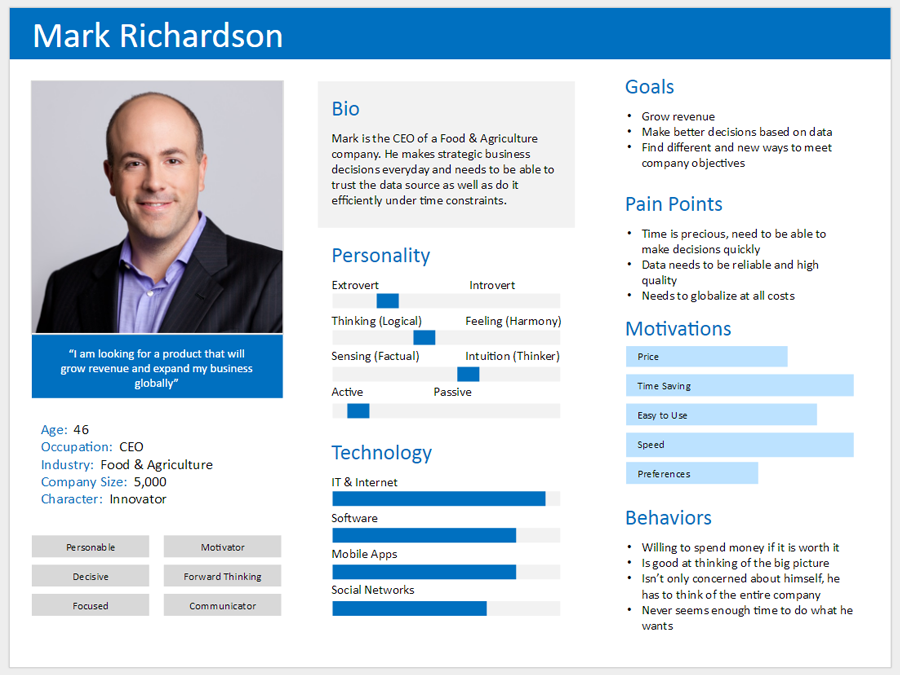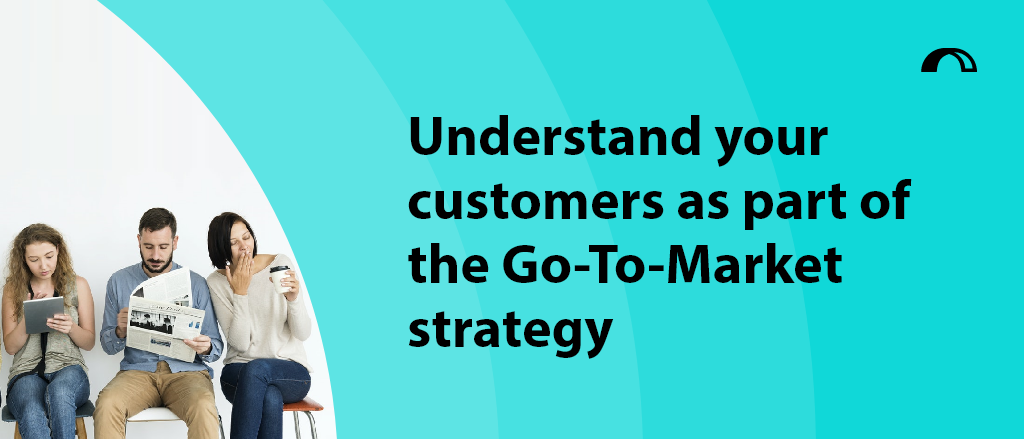Do you want to know the secret to successful international expansion? Businesses which succeed have a plan; they have a go-to-market (GTM) strategy. In our previous blog, the importance of a GTM strategy we discussed the 5 core components to building an effective GTM strategy. Your GTM strategy must start with your target market and next, you must understand your customer. In this article, we will explore the ‘customer’ pillar by explaining how to identify your key target customers and how to retain them to maximise the lifetime value of each and every one.
Steli Efti, CEO of close.com said, “Whoever understands the customer best wins.”. This next critical step in developing your GTM strategy should focus on acquiring customer intelligence so you know exactly who your customer is, how they behave and what their needs are. This can be achieved through primary market research. Unlike secondary research, primary research entails obtaining information directly from your target customers. The information gained will aid with segmentation and creating buyer personas, thus allowing for effective targeting and positioning of your product/service.
Understand your customers using primary market research methods
Here are some of the most popular primary market research techniques used:
Interviews
One-to-one discussions can be conducted over the phone, face-to-face or virtually. This method can be costly due to the time and resources required to recruit participants, the interview process itself (largely dependent on sample size), and the analysis of all the responses. It is common practice to offer participants an incentive.
Focus groups
Strategically select a sample who can test your product, give product/service feedback and answer your questions such as: what they expect or be willing to pay, what would make them loyal to your product? Brand perceptions they have, can the product/service be improved? However, be mindful that responses can be skewed by the facilitator as well as the people in the group.
Online surveys
These are structured questions which can be carried out over the phone, emailed or online. This option is versatile, due to the array of question formats which can be deployed. One disadvantage with online surveys is that completion rates can be low unless an incentive is offered.
Observation-based research
As the name suggests, this is based on observation only. This is a popular method in the retail environment. The drawback to this method is that it can also leave many questions unanswered.
Test marketing
This technique is commonly used by software firms, where they offer “beta” versions of their software to a sample of potential customers. The caveat to this approach is that you are potentially giving your competitors a sneak preview.
Understand your customer segmentation
Upon completion of market research, you will gather sufficient insights to segment your customers. Customer segmentation is commonly used to separate groups of individuals who share homogeneous characteristics. The most common forms of segmentation are geographical, demographics, behavioural and psychographic.
Geographical
This refers to creating segments based on geographical location. This may potentially help to determine your business location(s), as well as distribution and marketing channels.
Demographics
These elements encompass age, education, income, family size, race, gender, occupation, nationality, etc. This is a very popular approach because what we consume and how we consume is largely based on demographic factors.
Behavioural
Segmenting the market through behavioural characteristics and decision-making patterns can be divided into four parts: purchase behaviour, occasion/timing, benefits sought and customer loyalty. Let’s look at each one in greater depth.
1. Purchase behaviour
It is incredibly useful to understand your customer journey. During different stages of your customer journey, they will have different requirements. In the research and information gathering phase, customers are seeking to know about things like product benefits, prices, and customer reviews. When in the final decision-making stage, customers will have shifted their focus to warranties and after-sales care. Ensure that you create marketing collateral to cover all stages of a customer journey.
If you are selling to a B2B audience, major purchases typically require input from various parts of the company such as: finance, purchasing, IT, senior management. Find out what your customer’s role is in the purchasing process. The five main roles in organisational buying centres are: users, influencers, buyers, deciders and gatekeepers1. Let’s say if you are selling software as an example, the software ‘users’ will be keen to understand the product benefits. The ‘buyers’ will be adamant on getting the best price/deal. The finance department (‘deciders’) will be interested to know what the payment options are. As you can appreciate, these roles require different marketing messages and tactics.
2. Occasion / timing
This form of segmentation involves monitoring a customer’s purchases to establish a pattern so that you can forecast any marketing requirements. For example, Black Friday is growing each year in the UK. From a marketing perspective, you can notify customers in advance that there will be unmissable Black Friday offers to leverage the segment who are looking for a bargain.
3. Benefits sought
When we make purchases, we base those decisions on the belief that we will receive a certain benefit from using the product or service. Even with an everyday product such as shampoo. There are different shampoos for different hair types: curly, normal, dry, coloured, sensitive scalps. Users will buy a particular shampoo to suit their needs. By grouping segments into benefits, it will help you to create the right marketing message to each segment.
4. Customer loyalty
Your aim should be customer retention and seeking to maximise the lifetime value of each one. To help with customer retention, loyalty schemes are often deployed in the travel, retail and food retail sectors. Tesco’s ‘Clubcard’ loyalty scheme is an example of best practice. Customers are sent discount coupons for products they frequently buy because Tesco analyse their data.
Psychographic
This segmentation is used to group customers by their shared personality traits, beliefs, values, attitudes, interests, and lifestyles. Knowing these factors will enable you to tailor your marketing messages to the right audience, even if you are selling an identical product/service. For example, in the car industry, Porsche competes in the premium category. Using psychographic segmentation2, they have categorised their customers using the following profiles:
- The top gun: an ambitious and driven individual who cares about power and control and expects to be noticed
- The elitist: an individual from old money (blue blood). Has the attitude that a car is “just a vehicle” and not an expression of a person’s personality
- The proud patrons: views a Porsche as a trophy considering it a reward for hard work; with ownership as the main goal, not being noticed
- The bon vivants: are thrill seekers and jet setters, with the Porsche as a means of excitement
- The fantasist: sees the Porsche as a form of escape and does not care about impressing others
Create buyer personas to help you understand your customers
From your market research and customer segmentation activities, you will gain sufficient data to create a ‘representation’ of your ideal customer. Make them memorable by giving them a name and a picture, use demographics data, behaviour, motivations, what are their pain points and how can you solve them. Here is an example of what you could include in a buyer persona3:

Paul McIntosh, Founder and CEO at Bridgehead adds, “Buyer personas offer valuable structure and insight, use them to guide product development and tailor your marketing efforts to create messages that resonate with that group of audience.” As well as customer acquisition, your key objective should be to retain those that are most desirable and maximise the lifetime value of them. Personas will also help to provide clarity and direction when deciding which group(s) to focus your efforts on.
Understand your customers for successful expansion
Truly understand your customers, their challenges and how you can solve their problems, to gain competitive advantage. Understanding your customers is a critical step in building an effective GTM strategy and ultimately, towards a successful international expansion. Since 2002, we have helped businesses from all over the world sell more products and services to more customers in more countries. We are passionate about helping our clients to reach customers in the UK, wider Europe and North America. Contact our specialists today.
Sources:
1. Lumen Learning
2. Stephen Zoeller Marketing blog
3. Tamara Siem
Insights on international expansion
Sign up to our free monthly newsletter for more insights to help your business reach new markets straight to your inbox:
Let’s connect











